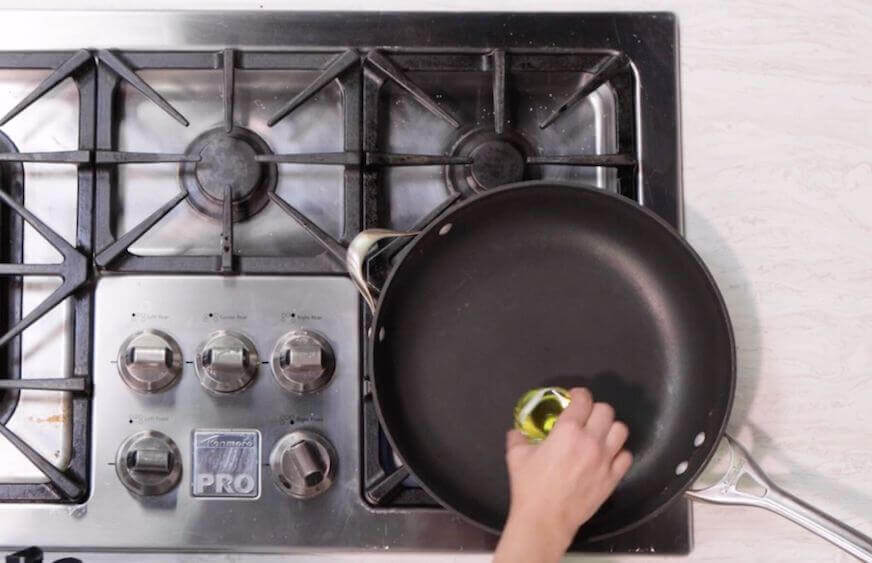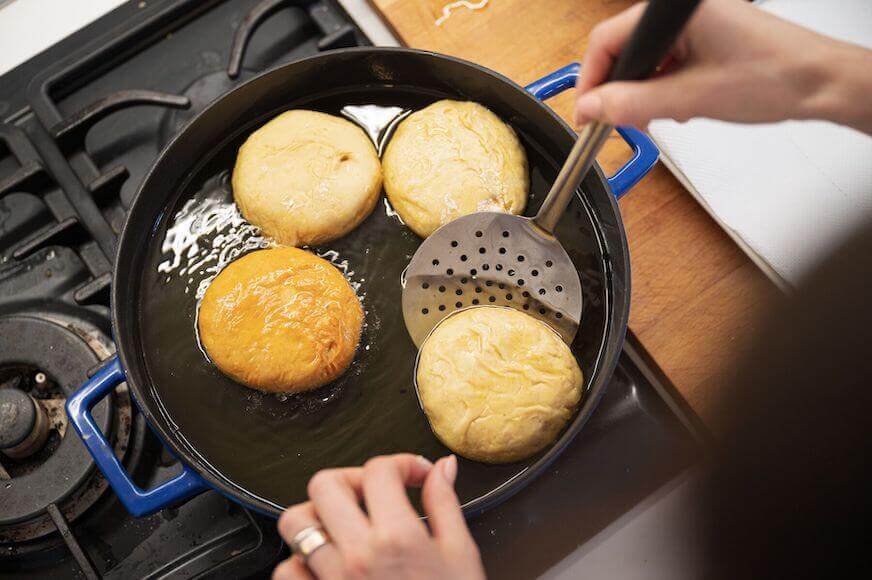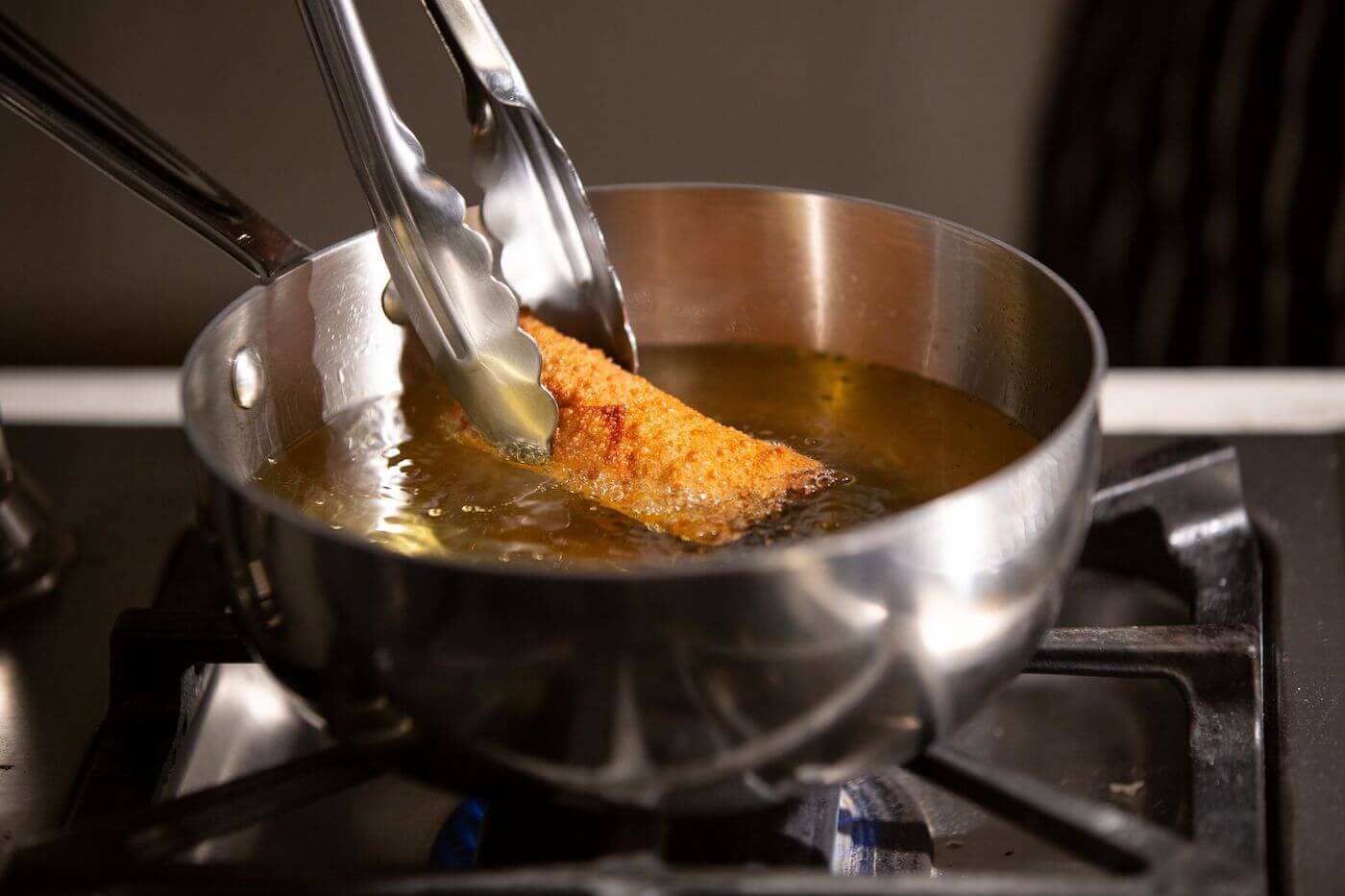Cooking Oil Smoke Points & Why They Matter
Have you ever turned on the stove and added oil to your pan, only to be attacked by smoke before you’ve even added your ingredients? If so, it’s time you learn about oil smoke points.
The smoke point—the temperature when an oil begins to smoke—is just as important as flavor when you’re choosing a cooking oil. Learning about smoke points can help you decide whether to choose peanut oil, extra virgin olive oil, or some other fat for your next recipe.
What Is an Oil Smoke Point?
The smoke point of an oil is the temperature when the oil begins to smoke. Smoke points may be as low as 325ºF or as high as 520ºF.
At this temperature, the oil not only begins to smoke but it also starts to break down. This can produce foul-tasting compounds that can quickly ruin a batch of fried chicken and fill your kitchen with a pungent stench.
Once oil reaches its smoke point, it also begins releasing free radicals that can be harmful to human health.
What Impacts Oil Smoke Point?
Different types of oils have various smoke points, with multiple factors impacting the final number.
The origin of the oil—whether that’s a sunflower seed, olive, or corn kernel—plays a role in the smoke point. However, the way the oil is processed has an even larger impact on its smoke point.
Inexpensive oils like canola oil, vegetable oil, and soybean oil are typically highly refined via means like filtering, bleaching, and heating. These processes remove compounds such as minerals and enzymes that may add flavor and color but also lead to a low smoke point. That means clear, light-colored oils often have high smoke points.

The opposite of highly-refined oils are virgin oils that have not been processed beyond pressing. (Think oils like an aromatic extra-virgin olive oil or dark and nutty walnut oil.) These fats typically retain much of their flavor and aroma, but they tend to have low smoke points.
No matter which type of oil you choose, be aware that it can degrade over time. High temperatures, light, water, and air can all cause oils to degrade, which in turn lowers their smoke points. Therefore, store processed oils in a dark cabinet away from sources of heat and unrefined oils in the refrigerator.
Smoke Points of Common Cooking Oils
While the exact smoke point of a virgin olive oil or sunflower oil may vary slightly between brands, you can use these numbers as a guide.
- Refined avocado oil: 520ºF
- Safflower oil: 510ºF
- Refined or light olive oil: 465ºF
- Soybean oil: 450ºF
- Peanut oil: 450ºF
- Corn oil: 450ºF
- Sunflower oil: 450ºF
- Ghee: 450ºF
- Vegetable oil: 400-450ºF
- Canola oil: 400ºF
- Grapeseed oil: 390ºF
- Virgin avocado oil: 375ºF
- Unrefined sesame oil: 350ºF
- Unrefined coconut oil: 325ºF
- Extra virgin olive oil: 325-375ºF
How to Choose an Appropriate Oil
When you’re choosing an oil in the kitchen, think about flavor as well as smoke point. Your cooking method will have a big impact on the type of oil you should choose.
It’s a good idea to keep a few different types of oil in your kitchen with various smoke points. While you don’t need to have safflower oil, peanut oil, and soybean oil in your cupboard, you should have at least one oil with a high smoke point as well as any low smoke point oils you enjoy.
Sautéing
Since you’ll be bringing oil to a high heat, choose an oil with a high smoke point. Soybean oil, corn oil, sunflower oil, and vegetable oil are all appropriate.
Deep Frying
Cripsy, delectable items like french fries, onion rings, and fried chicken call for an inexpensive and neutral oil that can handle moderate temperatures. When you’re deep frying, you’ll often heat the oil to a temperature between 325ºF and 400ºF. Peanut oil, vegetable oil, and canola oil are all suitable options.

Vinaigrettes
No heat means no need to consider smoke points. Instead, think about flavor. If you want a fresh citrus juice or small-batch vinegar to shine, use a neutral oil like avocado oil or vegetable oil. And if you want the oil to add flavor to your vinaigrette, choose nutty pumpkin seed oil, rich hemp seed oil, or smooth extra virgin olive oil.
Baking
If you’re baking cookies, cakes, or muffins, you should be more concerned about flavor than the smoke point. Neutral oils like vegetable oil and canola oil work well in both sweet and savory baked goods, and coconut oil can add a nice subtle flavor.
Culinary & Pastry Career Survey
Culinary & Pastry Career Survey
What's your ideal culinary career? Answer 20 simple questions and see if your dream career gets revealed to you.

We’ve compiled of all of the essential questions into one handy guide: Career options, description of skill requirements, and more!


Choose the Best Ingredients for Your Cookings
Learning how to choose the proper oil for your recipes is just one part of becoming confident and successful in the kitchen. Other important skills include learning how to choose and safely handle knives and how to properly store fruits and vegetables.
One way to improve your culinary knowledge is by enrolling in online cooking classes. Escoffier and America’s Test Kitchen have teamed up to bring you over 320 cooking classes that you can complete on your own time from the comfort of your own home.
And if you’d like to dive a bit deeper into the culinary world, Escoffier offers both degree and diploma programs in the culinary arts.
Check out these articles next:
- Couscous vs. Israeli Couscous: What’s the Difference?
- The Difference Between Chives, Scallions, and Green Onions
- Minced Garlic vs. Garlic Powder: What’s the Difference?
This article was originally published on December 8, 2017, and has since been updated.


